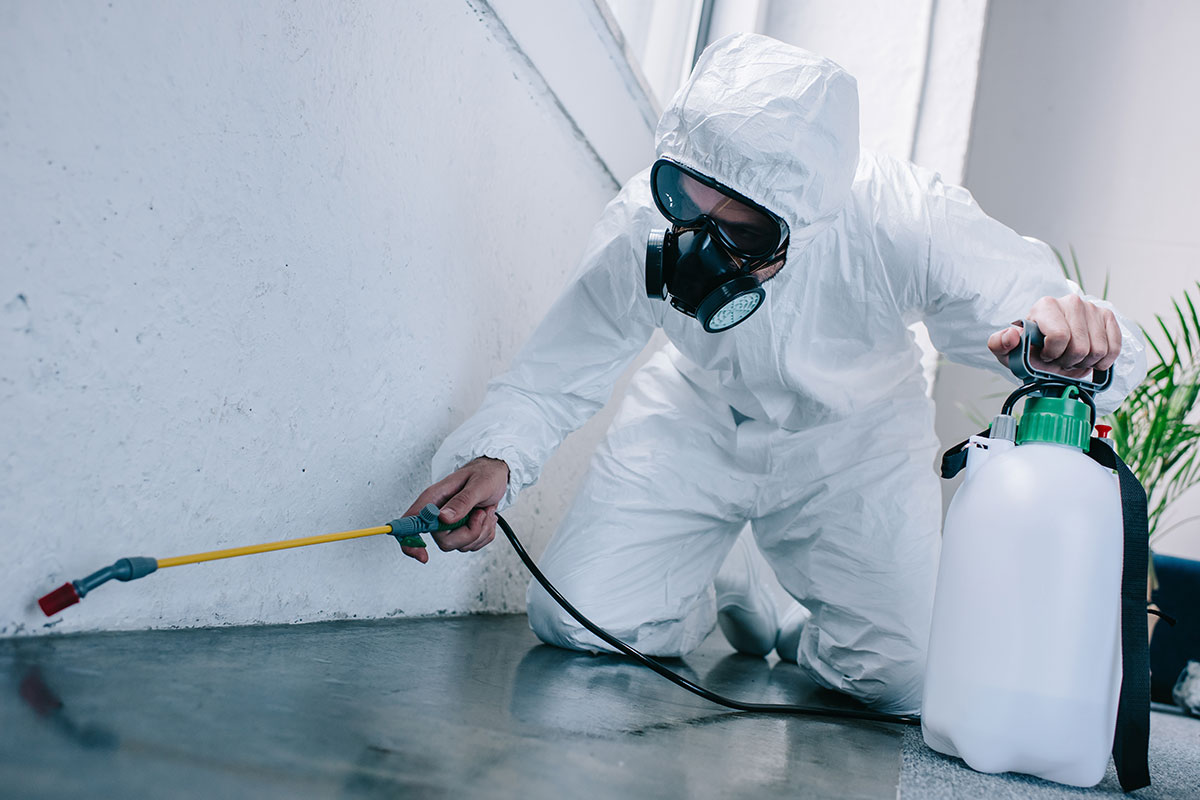Dependable Pest Control Auckland: Professional Extermination and Prevention
Wiki Article
Understanding Various Types of Pest Control Methods and Their Effectiveness
When taking into consideration parasite control techniques, it is essential to comprehend the diverse methods available and their differing degrees of efficiency. By discovering the nuances of these pest control methods, a comprehensive understanding of exactly how to resolve insect issues can be established.Chemical Pest Control Techniques
Chemical insect control techniques play an essential duty in properly taking care of and eliminating pest infestations in different settings. One of the essential benefits of chemical pest control is its ability to offer quick and targeted solutions to pest problems. Pest Control Auckland.Nonetheless, it is vital to take into consideration the possible dangers and drawbacks related to chemical pest control methods. Overreliance on chemicals can lead to the development of chemical resistance in bugs, making them more challenging to manage over time. Furthermore, the use of certain chemicals can have harmful impacts on non-target organisms, the setting, and human health and wellness if not used appropriately.

Biological Bug Control Methods
Using natural predators and virus to manage parasite populaces successfully, biological insect control approaches provide a eco-friendly and lasting approach to pest monitoring. By introducing or advertising the activity of organisms that naturally exploit or infect parasites, such as ladybugs for aphid control or specific microorganisms for caterpillar infestations, biological control can assist keep bug populaces at manageable levels without the requirement for artificial chemicals. This method is especially advantageous for organic farming methods, as it prevents using potentially dangerous materials while keeping crop health and wellness.
Physical Parasite Control Techniques
While biological parasite control approaches focus on taking advantage of all-natural killers and pathogens, physical pest control techniques make use of physical and mechanical barriers to manage insect populations. These approaches are commonly thought about eco-friendly as they decrease the usage of chemicals. Physical insect control consists of strategies such as trapping, using barriers like displays or internet, and physically getting rid of bugs from the area.Catches are frequently used in physical parasite control to Clicking Here capture and eliminate bugs like rodents and insects. These traps can be baited with food or scents to draw in the parasites, leading them to an included location where they can be quickly disposed of. An additional physical method is making use of barriers such as webs, displays, or fences to stop insects from getting in or infesting certain areas. For instance, setting up fine mesh screens on home windows can aid shut out insects and flies.
Natural Pest Control Approaches
Integrating all-natural predators and plant-based repellents is a crucial strategy in applying effective natural insect control methods. By encouraging the presence of advantageous pests like ladybugs, lacewings, or predatory mites, garden enthusiasts can naturally manage pest populations. These killers prey on typical garden bugs such as termites, aphids, and caterpillars, assisting to maintain a well balanced ecosystem without the need for chemical treatments.
In addition, applying social methods such as crop turning, friend planting, and keeping proper plant health can likewise enhance the effectiveness of all-natural parasite control techniques. These methods not just assist in preventing parasite invasions yet additionally promote biodiversity and general community resilience. By integrating these all-natural strategies, people can properly handle parasites while reducing environmental influence.
Integrated Pest Management (IPM) Technique
Implementing an Integrated Insect Monitoring (IPM) approach is vital for effectively regulating insect populaces while decreasing reliance on chemical pesticides. IPM is a extensive and lasting strategy that combines numerous insect control techniques to attain lasting solutions. This method concentrates on control, monitoring, and prevention to address insect problems in an ecologically friendly way.IPM integrates biological, cultural, physical, and mechanical techniques with the restricted and tactical use of pesticides when necessary. By emphasizing proactive measures such as habitat modification, organic control, and exemption, IPM intends to minimize bug populaces and their effect on the environment. Routine tracking is important in IPM to examine insect levels accurately and establish one of the most suitable control approaches.
One of the key advantages of IPM is its capability to decrease the risks related to too much pesticide usage, such as find more info environmental contamination and injury to non-target microorganisms. In addition, IPM promotes an extra holistic strategy to pest monitoring by thinking about the overall reference ecological community dynamics. Generally, the IPM method offers a lasting and reliable solution for parasite control while promoting environmental duty.
Final Thought
In conclusion, comprehending the various kinds of parasite control methods and their performance is important in effectively handling bug problems. Integrated Bug Monitoring (IPM) strategy, which incorporates different approaches for lasting parasite control, is progressively being acknowledged as a environmentally friendly and all natural solution.Chemical parasite control techniques play an essential function in successfully managing and eradicating pest invasions in different environments.Making use of all-natural predators and virus to take care of pest populations properly, biological parasite control techniques offer a green and sustainable method to pest monitoring. By advertising the activity or introducing of microorganisms that naturally prey on or infect parasites, such as ladybugs for aphid control or specific microorganisms for caterpillar invasions, biological control can help preserve bug populaces at convenient levels without the demand for synthetic chemicals.While biological parasite control approaches focus on utilizing natural predators and pathogens, physical pest control techniques use mechanical and physical obstacles to handle parasite populations. Integrated Parasite Monitoring (IPM) strategy, which integrates various techniques for sustainable parasite control, is progressively being recognized as a holistic and environmentally friendly service.
Report this wiki page